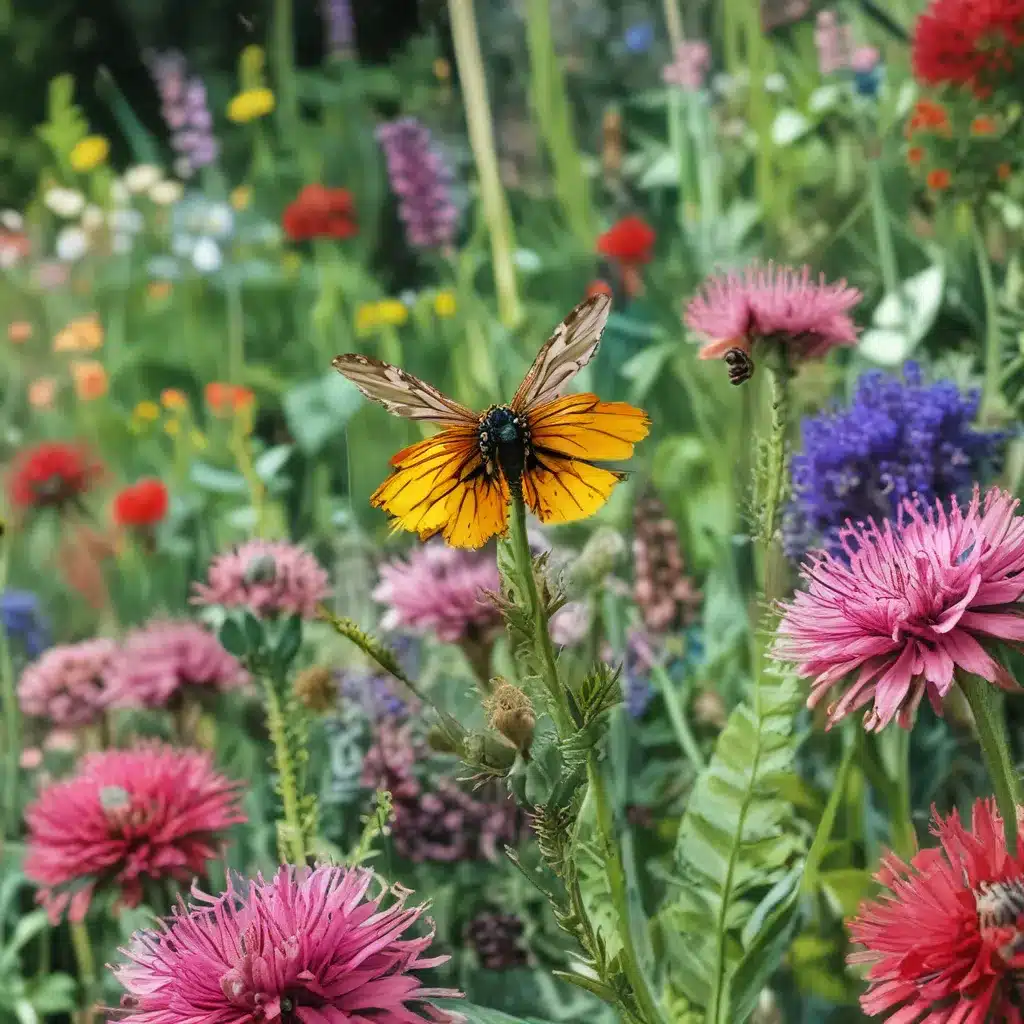
The Incredible Diversity of Life
As I stroll through the lush gardens of our Thornapple Community Supported Agriculture (CSA) farm, I’m struck by the sheer abundance and variety of life buzzing all around me. From the delicate fluttering of butterflies to the industrious scrambling of ants, this vibrant ecosystem is teeming with an incredible diversity of insects – and that’s exactly the way we want it.
You see, when it comes to sustainable agriculture, biodiversity is the name of the game. According to FoodPrint, scientists estimate that at least 87 million unique species of animals, plants, fungi, and other organisms exist on our planet, each playing a crucial role in their local environment. And in the world of farming, that diversity is absolutely essential.
Biodiversity: The Key to a Healthy Agroecosystem
Imagine your garden as a well-orchestrated symphony, with each plant, animal, and microorganism contributing its own unique part to the overall harmony. That’s the essence of an agroecosystem – a complex, self-sustaining network of life that works together to create a thriving, productive environment. And at the heart of that system? Biodiversity.
As the IPES-Food report explains, embracing biodiversity is a key component of regenerative agriculture, which aims to “build up natural resources like healthy soil and water rather than using them up.” By incorporating a diverse array of plants, animals, and other organisms into our farming practices, we can harness the natural symbiotic relationships that exist within healthy ecosystems.
For example, let’s talk about the humble legume. These nitrogen-fixing plants don’t just provide us with delicious beans and peas – they also enrich the soil, making it more fertile for the other crops we grow. And when we interplant legumes with our vegetables and grains, we create a mutually beneficial relationship that boosts the productivity of our entire system.
The Vital Role of Insects
But it’s the insects that really steal the show when it comes to biodiversity on the farm. These incredible creatures are the unsung heroes of the agroecosystem, performing a wide range of essential functions that keep our gardens thriving.
Take pollinators, for instance. As the Recommendations for Salisbury CAP CRP report notes, a diverse array of pollinators – from bees and butterflies to moths and hummingbirds – is crucial for maintaining the health of our native plant populations. And when those plants are part of our crops, it means a bountiful harvest for us as well.
But pollinators are just the tip of the iceberg. Beneficial insects like ladybugs, lacewings, and parasitic wasps are natural pest control experts, helping to keep problematic bugs at bay without the need for harsh chemicals. And let’s not forget about the unsung heroes of soil health – those busy little decomposers like beetles and earthworms that turn organic matter into rich, fertile humus.
Cultivating a Biodiversity Buffet
So, how do we go about attracting this incredible diversity of insects to our CSA gardens? It all starts with creating a veritable buffet of resources for them to feast upon.
One of the easiest ways to do this is by incorporating a wide variety of flowering plants into our gardens. By planting a mix of annuals, perennials, and even woody plants, we can ensure that there’s a constant supply of nectar and pollen for our pollinator friends throughout the growing season.
But it’s not just about the flowers. We also need to provide suitable shelter and breeding grounds for our beneficial insects. That’s where things like native grasses, leaf litter, and even a few strategically placed logs or rock piles can make all the difference.
And let’s not forget about our feathered friends. By adding bird-friendly features like birdhouses, birdbaths, and native berry-producing shrubs, we can attract a whole host of insect-eating avian allies to our gardens.
Balancing Act: Cultivating Biodiversity Without Chaos
Of course, as with any complex ecosystem, there’s a delicate balance to be struck when it comes to cultivating biodiversity on the farm. We don’t want to create a veritable jungle of uncontrolled growth – we still need to maintain productive growing spaces for our crops.
That’s where strategic planning and careful observation come into play. By monitoring the interactions between our plants and insects, we can learn to fine-tune our approach, adding or removing certain elements as needed to keep everything in harmonious equilibrium.
And let’s not forget the importance of keeping a diverse array of crop varieties in our fields. As the FoodPrint article points out, genetic diversity in our crops and livestock is just as crucial as the biodiversity in our gardens. By preserving heirloom varieties and heritage breeds, we can safeguard our food supply against the threats of disease and climate change.
The Cultivated Wilderness: Embracing Biodiversity on the Farm
At the end of the day, the key to attracting beneficial insects and cultivating a thriving agroecosystem on our CSA farm is to embrace the inherent wildness that exists all around us. By creating a patchwork of diverse habitats – from flowering meadows to shady forest edges – we can invite a whole host of creatures to make their homes in our gardens.
And as we navigate this delicate dance of biodiversity, we’re not just improving the health and productivity of our farm – we’re also playing a vital role in preserving the incredible richness of life on our planet. It’s a responsibility that we take seriously here at Thornapple CSA, and one that fills us with a profound sense of wonder and gratitude every time we step out into our lush, vibrant gardens.
So, let’s raise a glass (of freshly squeezed CSA juice, of course) to the unsung heroes of the insect world – and to the boundless beauty of biodiversity that makes our farm, and our world, truly thrive.



